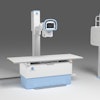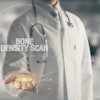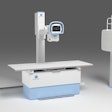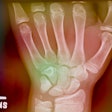Risk factor schemes such as the Framingham risk assessment work fine for patient populations, but they do a poor job of predicting the atherosclerotic plaque burden of individuals, according to a new study by Dr. David Dowe and colleagues in the January American Journal of Roentgenology.
Although the tools were designed to evaluate risks across a population, they are routinely used to predict individual risk and guide individual treatment, with significant consequences for the patient and the population as a whole, the authors stated.
The Framingham study introduced epidemiologic risk factor analysis into medicine in 1948 and has since become a universal tool for measuring risk in individuals -- with serious consequences for patients, according to Dowe, of Atlantic Medical Imaging in Galloway, NJ, and colleagues from Yale School of Medicine in New Haven, CT.
"As the cholesterol hypothesis of atherosclerosis rose to prominence, the risk factor approach rose with it, culminating in an entire clinical strategy centered around achieving a serum low-density lipoprotein (LDL) cholesterol target under the National Cholesterol Education Program/Adult Treatment Panel III (NCEP/ATP III) guidelines," they wrote. "However, evidence is accumulating that risk factor analysis has substantial limitations when used to guide individual therapy" (AJR, January 2009, Vol. 192:1, pp. 235-243).
Risk factor-based schemes are weak discriminators of overall atherosclerotic plaque burden in individual patients, they wrote. As a result, many patients with little or no plaque might be subjected to lifelong drug therapy, while others with significant plaque might be undertreated or not treated at all.
The reliance on risk factor analysis for clinical decision-making is seen, among many examples, in the American Heart Association's (AHA) 2006 consensus statement (Circulation, October 17, 2006, Vol. 114:16, pp. 1761-1791) on the role of coronary CT imaging. In the consensus paper, coronary calcium scoring was deemed not useful in asymptomatic patients with either a low (< 10%) or high (> 20%) 10-year risk of coronary artery disease.
"However, if the existing risk factor schemes cannot reliably distinguish intermediate-risk patients from the others, to use risk factor analysis as a gatekeeper for the imaging techniques would make little sense," the authors wrote. "This is so especially if the risk analysis is less sensitive and less specific than the imaging technique because the initial steps in a screening scheme discard subjects from further consideration, leaving them misclassified without the possibility of correction by later, more accurate steps."
As for the AJR study, the limitations of risk factor analysis have been shown using calcium scoring, but not for the assessment of total plaque burden, Dowe and colleagues wrote. Therefore, the group aimed to assess the degree to which Framingham risk estimates and the NCEP/ATP III core risk categories correlate with total coronary atherosclerotic plaque burden, both calcified and noncalcified, as estimated on coronary CT angiography (CTA).
The researchers performed coronary CTA in 1,653 patients (1,089 men, 564 women; mean age, 51.6 ± 10.5 years). The most common indications for the exam included hypercholesterolemia, a family history of heart disease, hypertension, smoking, and atypical chest pain.
Patients received beta-blockers in the form of 100 mg of oral metoprolol an hour before the CT scan, with additional doses of 50-100 mg for patients whose heart rates remained above 72 bpm. Images were acquired on a 64-detector-row CT scanner (LightSpeed VCT, GE Healthcare, Chalfont St. Giles, U.K.), with 80 mL of iodinated contrast injected at 5 mL/sec, followed by a saline chaser.
Scanner settings included collimation of 0.625 mm, tube voltage of 120 kVp, and tube current of 450-800 mA, with electrocardiogram dose modulation used when possible. Data were reconstructed at 70%, 75%, and 80% of the RR interval, with additional reconstruction windows created if motion artifacts were present.
A radiologist with extensive experience in coronary CTA read the exams using maximum intensity projections and curved reformatted images with a 3D workstation (Advantage Windows, Cardiac IQ, GE Healthcare). Images with limited image quality were excluded from the analysis even if the radiologist attempted a clinical reading, although heavy calcification was not a criterion for exclusion.
The results showed that 31% of men (340 of 1,089) and 46% of women (262 of 564) had no detectable plaque. One hundred ninety-one patients (11.6%) had exclusively noncalcified plaque.
The researchers found only modest correlation (Spearman's rho, 0.49-0.55) of coronary artery plaque scores with Framingham 10-year risk estimates. And for all comparisons of National Cholesterol Education Program risk, the proportion of raw agreement was less than 0.50. Cohen's kappa ranged from 0.18 to 0.20.
"The correlation of the Framingham 10-year risk estimate with the various atherosclerosis scores was modest," the authors wrote (segment plaque score [SPS], 0.55; segment stenosis score [SSS], 0.50; segment involvement score, 0.54; and Duke prognostic index, 0.49; all, p < 0.0001).
The risk scores were poor predictors of the need for statin therapy, according to the researchers. "Overall, 21% of the patients would have their perceived need for statins changed by using the coronary CTA plaque estimates in place of the NCEP core risk categories," the team wrote. Twenty-one percent of the patients on statins had no detectable plaque at coronary CTA. Interobserver agreement was good as measured on a series of 60 cases selected at random; Spearman's rho was 0.97.
"Both risk factor analysis and plaque imaging have been proposed as important tools in risk assessment; however, the results of our study show significant discordance between them," Dowe and colleagues wrote. "The conventional risk stratification correlated poorly with four measures of atherosclerosis severity: SPS, SSS, count of segments involved by any atherosclerosis, and the Duke prognostic score (an imaging-based measure of risk)."
Using risk factors alone, many patients with little or no plaque would be consigned to lifelong drug therapy, while others with substantial plaque would be left untreated, they wrote.
"More than a quarter of patients on statins had no detectable plaque but were already on drug therapy for life, and others were on no therapy despite plaque burdens as high as or higher than the median for patients with known coronary atherosclerosis," they wrote. "Misclassification of these types affected more than half of the patients in the present study."
Alternative approach?
An alternative approach -- combining risk assessments with coronary artery calcium scoring -- also appears inadequate because only about 20% of plaque is calcified, and nearly one-sixth of patients with no coronary calcium have plaque, they added.
Nevertheless, coronary CTA cannot yet be recommended as a replacement for risk assessment. First, low-dose prospectively gated exams must become more widely available. In addition, better tools are needed to evaluate the risk of noncalcified plaque from CT images; no quantitative system analogous to coronary artery calcium scoring yet exists for noncalcified plaque, the group noted. And the population for this study, mainly white and suburban individuals examined at a single imaging center, needs to be broadened before larger conclusions can be drawn.
"The Framingham and NCEP core risk categories do not reflect the amount of coronary atherosclerotic disease detected at coronary CTA in individual patients," Dowe and colleagues concluded. "Our study confirms the observations of others who used calcium scoring and extends the conclusion to include all plaque, calcified and uncalcified, detected at coronary CTA. Coronary CTA may provide incremental information beyond risk factors and may significantly influence therapeutic decisions regarding prophylactic therapy for CAD."
By Eric Barnes
AuntMinnie.com staff writer
January 5, 2009
Imaging studies seen as a better way to predict cardiac events, November 12, 2008
Echocardiography method predicts CAD, September 16, 2008
Multislice CT identifies coronary atherosclerosis in 'low-risk' patients, September 4, 2008
Quantitative stress echo can reliably find coronary artery disease, August 18, 2008
MRI evaluation of chest pain cuts acute coronary syndrome, August 15, 2008
Copyright © 2009 AuntMinnie.com



















